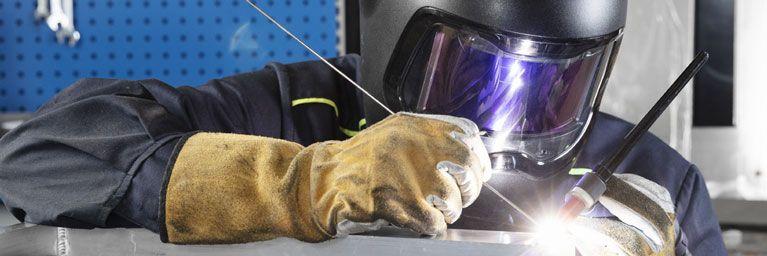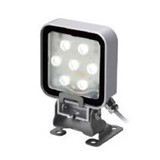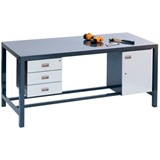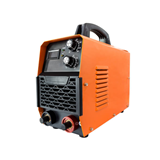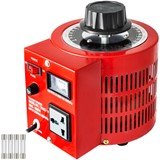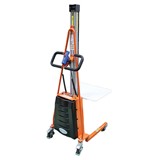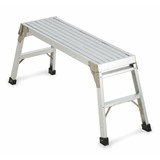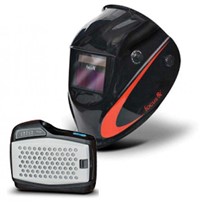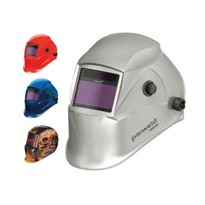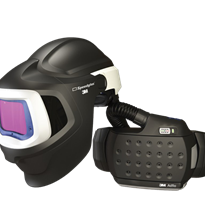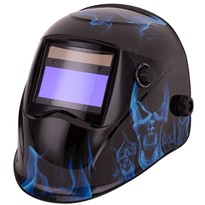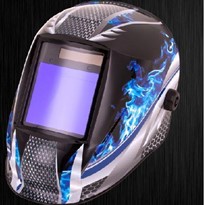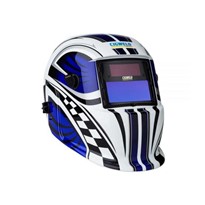Auto-darkening welding helmets are the best way to protect your eyes from harmful welding radiation. That's why many professionals and even hobby welders have transitioned from passive to auto-darkening helmets.
They save you the effort of constantly lifting the hood and provide efficient auto-darkening protection as soon as you strike an arc.
This article will explore how auto-darkening helmets work in detail. We'll cover the sensors, energy source, filter, and how they all work in real-time.
How Auto-Darkening Helmets Detect the Arc
Auto-darkening welding helmets have sensors positioned at the front of the helmet. Sensors detect the radiation and light from the welding arc and trigger the auto-darkening function. These sensors are exposed to high heat and light intensity while welding. So, they should be well made because you may get flashed if they fail.
Some helmets have two sensors, while higher quality welding hoods have four or more. The higher the sensor count, the safer you are. If you only have two sensors and both fail to detect the arc or become obstructed when welding in crowded spaces, you will get arc flashed. The Betaweld ADF helmet is a good option; it's affordable, durable, and has four sensors for improved safety.
Auto-Darkening Filter (ADF) Explained
The auto-darkening filter is what prevents harmful UV and IR radiation from harming your eyes. It's composed of multiple layers that provide UV/IR protection and darken the lens when the sensors detect the welding arc.
UV/IR Interference Filter
The first layer of an ADF is the UV/IR filter, also known as the band pass filter. It sits right behind the replaceable outside cover lens and provides constant protection from dangerous UV/IR radiation. So, even if the auto-darkening function fails to darken the view, you are safe from a serious eye injury. But, of course, this is only the case if the auto-darkening helmet abides by industry standards.
The band pass filter is also responsible for colour transmission. Older ADF technology only allowed a range of wavelengths of just 50 nanometers, which is why everything looked so green. But newer filters can safely transmit a much broader colour spectrum. A high-quality helmet like the 3M Speedglas G5-01 even lets you modify colour tones in the dark state.
Polarisation Filters
Polarisation filters darken the visible light when combined with other filters in the ADF. There are several polarisation filters in an ADF, and they are intertwined with the liquid crystal cells. When polarisation filters are positioned at a 90-degree angle from one another, the ADF will be at the darkest state. The angle between polarisation filters determines the darkening degree.
Liquid Crystal Cells (LCC)
Liquid crystal cells provide the actual auto-darkening in real time. Once the sensors detect the welding arc, a small voltage is released from the helmet's battery or solar panel to the LCC. This low electric power is sufficient to precisely realign the liquid crystals.
As a result, the polarised light is rotated to pass through the next polarisation filter at an angle that corresponds with the selected shade level.
One recent breakthrough in welding helmet technology is the curved ADF by 3M Speedglas. The 3M Speedglas G5-02 offers a unique curved ADF for a wider field of view and lower helmet profile. In addition, it provides exceptional colour transmission necessary for precision TIG welding, and it's rated down to 1A TIG arc power.
The 3M Speedglas 100 Series auto-darkening welding helmets are also a popular alternative, known for their affordability and work best for entry-level applications.
Need Further Help?
The experts at Alphaweld can help you choose a suitable auto-darkening helmet or other welding equipment for your welding application. To speak with our team of trusted experts, give us a call on (08) 9456 8000 or get in touch with us online and we'll happily assist you.


